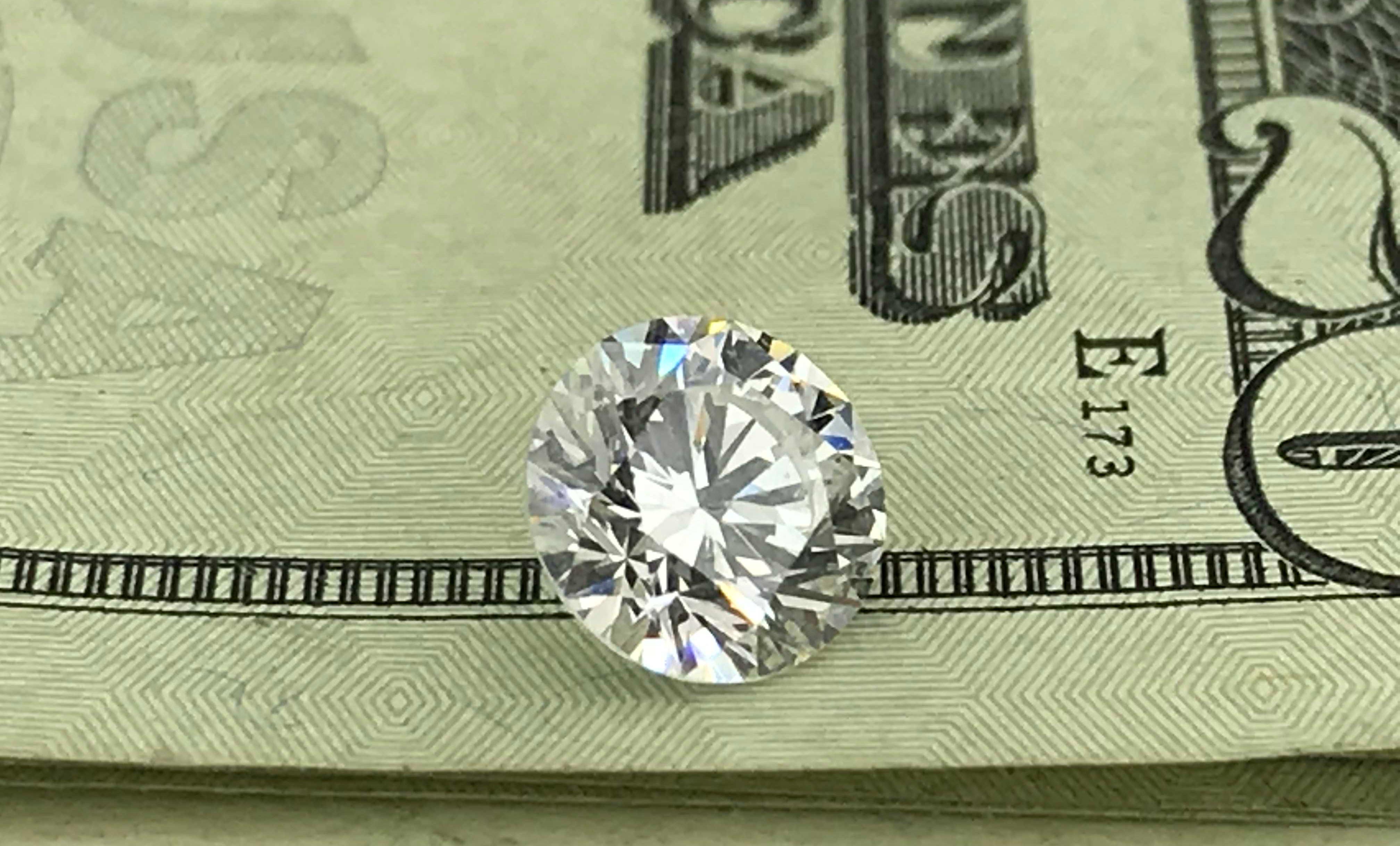Why Diamonds Are Expensive (& What You Can Do About It)

If you’re shopping for an engagement ring or a nice pair of one-carat studs, you’re probably experiencing sticker shock right now. Let’s face it, diamonds are expensive! Here’s why that diamond jewelry price tag has soooo many zeros and what you can do to find the diamond you want at a price you can actually afford.
Mining Your Business
One major reason that natural diamonds are expensive is because mining is expensive. Mining diamonds is a crazy business. First, exploration for diamond bearing volcanic pipes is tricky. The volcanoes aren’t where diamonds form: they are just transportation from deep in the earth where diamonds do form. They pick up diamonds by chance. You have to drill hundreds (or maybe even thousands) of exploratory holes to see whether a pipe contains diamonds and then figure out whether there are enough of them to make the effort of mining worth it. Then when a company finally finds a deposit, often in a crazy remote location, they have to invest millions for years to put the mine in production.

For example, at Ekati Diamond Mine in Canada’s Northwest Territories, geologists found indicator minerals in 1981. Finding the first diamond-bearing pipes took ten years because Ice Age glaciers had carried the minerals more than 350 miles. After three years of assessment and another three years of reviews, environmental impact studies, public hearings and negotiation with the national and territorial governments and local groups, development of the Ekati mine finally began in 1997.
Because the mine is in a permafrost region near the Arctic Circle, trucking in materials is only possible by ice road during the winter. About 2,000 truckloads of construction materials were hauled 190 miles from the nearest town. In the summer, everything has to be flown in so a landing strip was built to handle jumbo cargo jets. The mining company had to build everything: a processing plant for the diamonds, power plant, worker housing, medical clinic, and emergency response facilities. By the time Ekati went into production in 1998, the company had already invested $700 million.
Finding needles in haystacks is easy. In diamond mines, you have to move 250 tons of rock to find a single one-carat diamond. All those tons of rock have to be crushed and sifted through to locate that one tiny sparkling rock. Companies build huge expensive high-tech processing plants to extract diamonds from the ore.
That’s why mines are expensive to operate too. And after the mining no longer produces enough to be profitable, the mining company needs to restore the land as much as possible, replanting and making sure the pits are not dangerous. De Beers mined for seven years at Snap Lake in Canada, another remote location where everything had to be flown in and out. Exploration, development and remediation took much longer than mining itself.
And let’s say you have a one-carat rough diamond. You’ll lose about half of the weight in the cutting and polishing process. That’s why fine polished one carat mined diamonds are more than $5000 a carat. And two carat mined diamonds are more than twice as much because they are much rarer to find in the earth.

How You Can Save Big on Diamonds
If you want to save lots of money on diamonds, you have three options. You can sacrifice quality. You can buy a smaller diamond. Or you can choose lab-grown diamonds that are the same as mined diamonds with a different origin.
First, let’s talk about trading down in quality. Diamonds that have an off-white yellow, brown or gray tint cost less than colorless diamonds. Diamonds with eye visible inclusions cost less than diamonds that have excellent clarity. Diamonds that are sliced instead of faceted, cut in a flat thin shape cost less than faceted gems that are cut for brilliance and sparkle.
We don’t recommend sacrificing quality. Here’s why. You buy diamonds for their beauty and the unique way that they reflect and refract light. When you trade down in quality, you sacrifice that beauty. Diamonds that are tinted, included and not cut to maximize light return have less of the optical performance that we buy diamonds for. They aren’t as valuable for good reason.
The second way you can save money is to buy smaller diamonds. Large diamonds are very rare in nature so buying several smaller diamonds instead of a single larger gem costs less. Many small diamonds set together can have the same surface area as a larger stone but will cost less because they weigh less overall and also cost less per carat. Illusion settings play up this advantage, setting small diamonds together. These illusion stud earrings look like traditional diamond stud earrings but cost much less. And an illusion solitaire ring looks like a traditional diamond solitaire but is surprisingly affordable.
Finally, the last way to say significantly on diamond jewelry doesn’t require you to sacrifice quality or size to save 50% or more on your diamond jewelry. That is choosing diamonds that are grown in a lab instead of mined. That way you get all the beauty of mined diamonds without all the expense of mining. The wild places can stay wild and you can afford lab grown diamond jewelry that is identical in appearance to mined diamond jewelry at half the cost.
And the best part? Larger gems don’t command the same premium as large mined diamonds because growers can grow the size of diamond crystals that are most in demand. You can trade up to a larger and better quality lab grown diamond and still save money over a smaller lower quality mined diamond. That’s a win-win for everyone.


